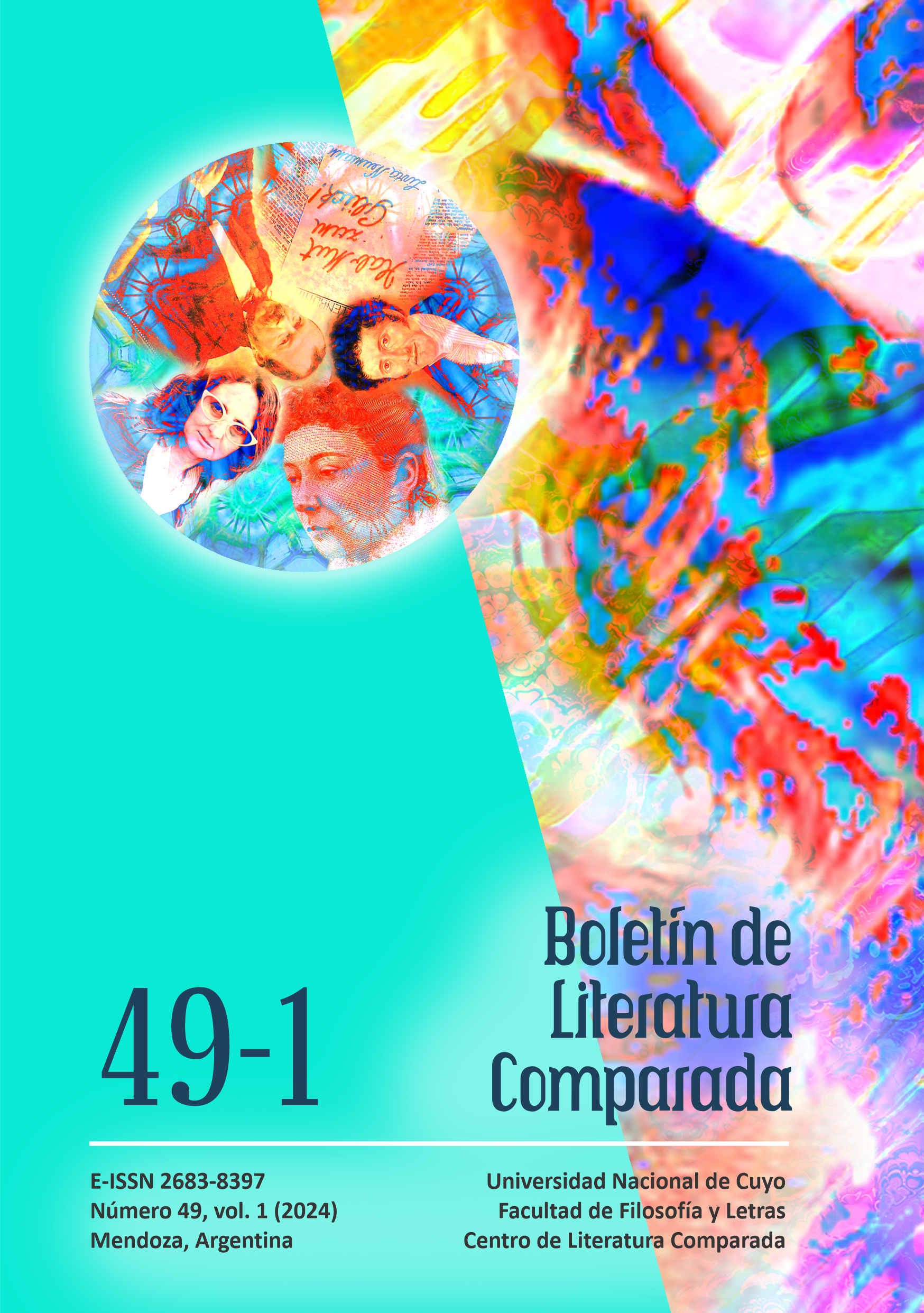Portrait of Ottoman Women in Fatma Aliye’s Novel: Udi
DOI:
https://doi.org/10.48162/rev.54.030Keywords:
Turkish novel, Feminism, Fatma Aliye, 19th centuryAbstract
This article provides an analysis of the image of Ottoman women during the transformation and changes of the late XIX Century through the novel Udi by Fatma Aliye, considered the first Ottoman Turkish novelist and translator. The independent women who populate her stories and novels defy the codes of conduct of the time. The author elaborates the psychology of new and modern female literary archetypes such as Bedia and Helvila from art, fashion and moral codes.
References
Akagündüz, Ümüt (2015). II. Meşrutiyet Döneminde Kadın Olmak, İstanbul, Yeni Insan.
Aliye, Fatma (2005). Muhaderat, İstanbul, Beyaz Balina Yayınları.
Aliye, Fatma (2012). Hayal ve Hakikat, İstanbul, Kesit Yayınları.
Aliye, Fatma (2018). Refet, İstanbul, İş Bankası Kültür.
Aliye, Fatma (2019). Udi, İstanbul, Turkuvaz.
Barlas, Asma (2022). Feminismo e islam. Las luchas de las mujeres musulmanas contra el patriarcado, Zahra Ali (Comp.), Buenos Aires, Capital Intelectual. p. 99.
Cervantes, Esmeralda (1893). Education and Literature of the Women of Turkey. Disponible en https://archive.org/details/addressoneducati00cerv/%20mode/2up
Derviş, Suat (2018). Las sombras del palacio, Madrid, Ardicia.
Efendi, Ahmet Mithat (2018). Felsefe-i Zenan, İstanbul, Sel Yayıncılık.
Esen, Nüket (2012). Modern Türk Edebiyatı Üzerine Okumalar, İstanbul, İletişim.
Haberman, Jürgen (1991). The Structural Transformation of the Public Sphere: An Inquiry into a category of bourgeois society, Cambridge, The Mit.
Hanım, Leyla (2003), El harén imperial y las sultanas en el siglo XIX, Palma de Mallorca, José J. De Olañeta.
Hanioğlu, Şükrü (1984). Abdullah Cevdet ve Dönemi, İstanbul, Üçdal.
Kadınlar Dünyası (5 de octubre de 1913). 1. no. 13.
Karavar, Nesrin (2021). Adile Sultan, A Mystical and Rebellious Ottoman Princess, Quaderns de la Mediterrània, (ISSN: 1577-9297), Barcelona, IEMed, No 34. Disponible en https://www.iemed.org/publication/adile-sultan-a-mystical-and-rebellious-ottoman-princess/#:~:text=Adile%20Sultan%20was%20the%20first,genre%2C%20that%20of%20mystical%20poetry
Köroğlu, Erol (2018). “Kadının İffetli Geçim Sorunsalı: Fatma Aliye’nin Udî’sinde Hayatı, Toplumu ve Cinselliği Yazmak”, Turkish Studies, eISSN: 1308-2140, volume 13, Issue 5, pp. 293-306.
Os, N. V. (2001). “Osmanlı Müslümanlarında Feminizm”. Mehmet Ö. Alkan (Ed.), Modern Türkiye’de Siyasi Düşünce: Cumhuriyet’e Devreden Düşünce Mirası Tanzimat ve Meşrutiyet Birikimi içinde (pp. 335-347), İstanbul, İletişim.
Özön, Mustafa Nihat (1985), Türkçe’de roman, İstanbul, İletişim.
Pardo Bazán, Emilia, (1999), Memorias de un solterón, Obras completas, tomo III, Domingo Ynduráin, director, Madrid, Biblioteca Castro, RAG.
Pardo Bazán, Emilia, La prueba, Obras completas, tomo III, Domingo Ynduráin, director, Madrid, Biblioteca Castro, RAG, 1999.
Pardo Bazán, Emilia, (2020). Cuarenta días en la Exposición, Alicante: Biblioteca Virtual Miguel de Cervantes. Disponible en https://www.cervantesvirtual.com/obra/cuarenta-dias-en-la-exposicion-1048256
Tevfik, Baha (2015), Feminizm Âlem-i Nisvân | Feminizm: Kadınlar Alemi, Konya, Çizgi Kitabevi.
Toprak, Zafer (2015), Türkiye'de Kadın Özgürlüğü ve Feminizm (1908-1935), İstanbul, Tarih Vakfı Yurt Yayınları.
Woolf, Virginia (2021), Matar al ángel del hogar, Madrid, Carpe Noctem.
Zeynep, H (1913), A Turkish Woman’s European Impressions, Cambridge, Cambridge University.
Downloads
Published
How to Cite
Issue
Section
License

This work is licensed under a Creative Commons Attribution-NonCommercial-ShareAlike 4.0 International License.




